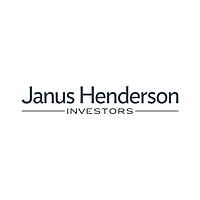Are bonds cheap or expensive? A 5-point valuation checklist
Poll a group of investors on their preferred equity valuation metric and you’ll likely be met with a consensus response: the price-to-earnings (PE) ratio.
Now, ask for the group’s preferred bond valuation measure and you’ll probably get anything but a consensus. Instead, everyone will likely pause for some inner pondering before responding with a bevy of different answers.
While investors typically track equity valuations on an asset class, style, sector, and security basis, this same approach does not often carry over to fixed income. Likewise, whereas most investors might have an opinion on whether equity securities are cheap or expensive, they do not tend to think about bonds the same way.
We believe bond investors would do well to consider valuation metrics as they determine how much to allocate to fixed income, and which sectors to allocate to. In our view, bringing valuation to the table may lead to better risk-adjusted returns in fixed income.
To provide a framework for this assessment, we highlight five key bond valuation metrics below.
1. Nominal yield
The first valuation tool bond investors may use is to simply consider the current yield to worst (YTW) on the Bloomberg U.S. Aggregate Bond Index (U.S. Agg). As shown in Figure 1, current YTW and 5-year annualized forward returns have been highly correlated for the U.S. Agg since 1992. Therefore, we believe investors would do well to pay attention to their starting yield.
Figure 1: Correlation between U.S. Agg YTW and 5-year annualized forward returns (1992-2018)
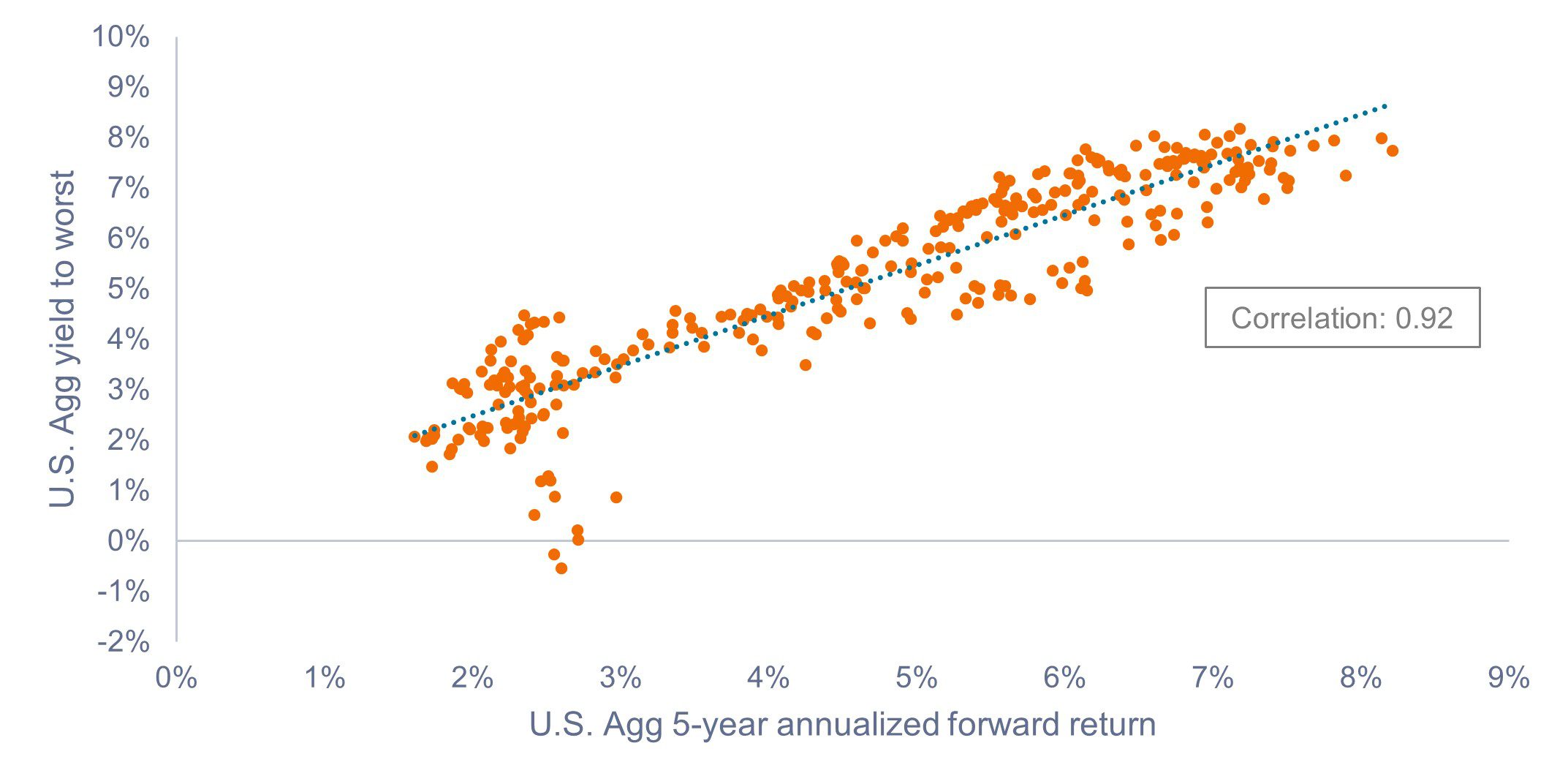
Source: Bloomberg, as of January 31, 2023. Period from January 31, 1992 to January 31, 2018.
While past performance does not guarantee future returns, we believe investors can look to current yield as a simple measure for predicting potential future bond returns. While no measure can work with absolute precision, it is worth noting that, following the sharp rise in yields in 2022, the starting YTW on the U.S. Agg is now in the 4.5% to 5% range. In our view, this currently makes the case for potentially better returns in fixed income than at any point since 2008, as shown in Figure 2.
Figure 2: U.S. Agg YTW and 5-year annualized forward returns (1976-2023)
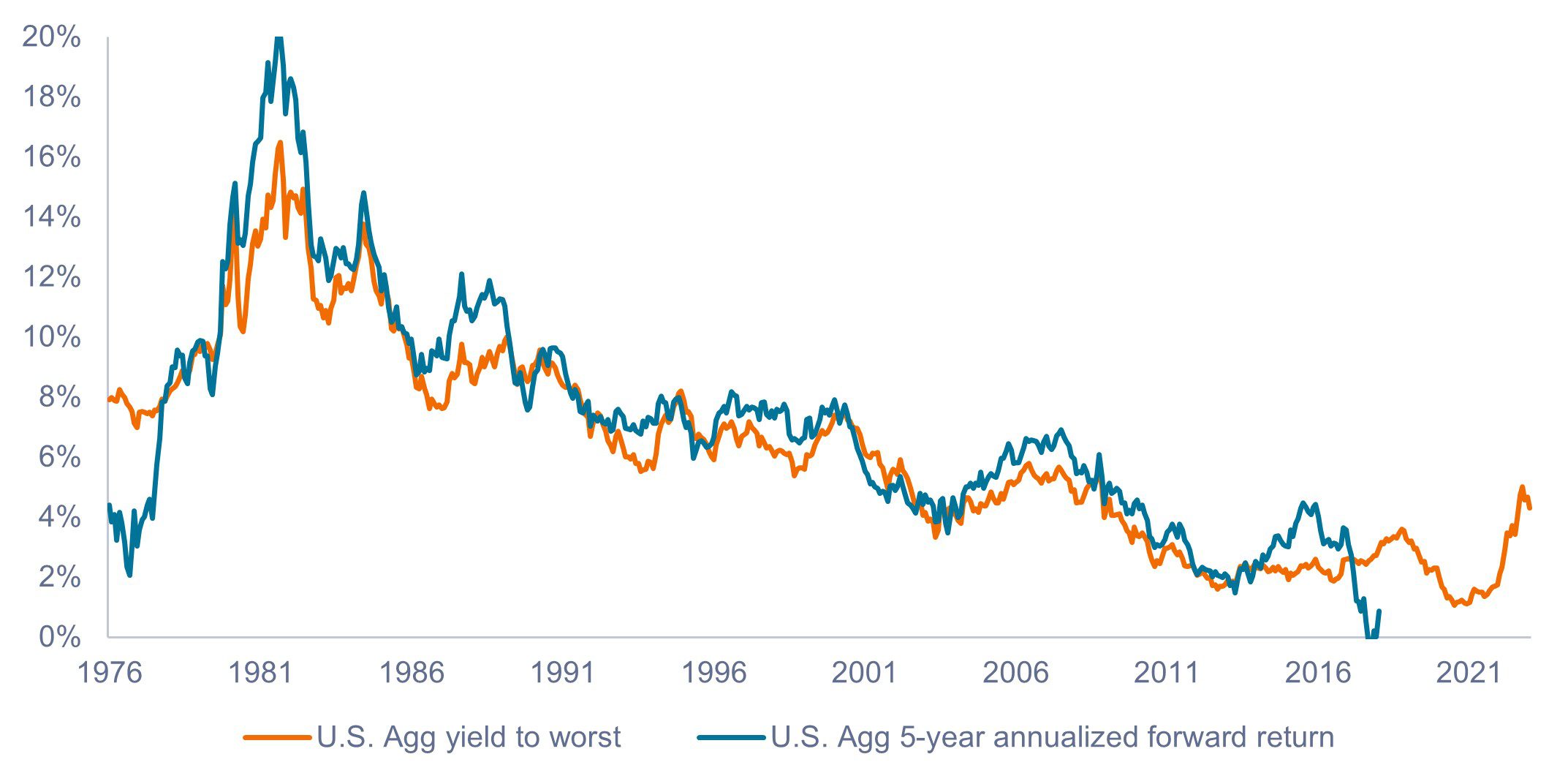
Source: Bloomberg, as of January 31, 2023. U.S. Agg yield to worst period from January 31, 1976 to January 31, 2023. U.S. Agg 5-year annualized forward returns period from January 31, 1976 to January 31, 2018. Past performance is no guarantee of future results.
2. Real yield
While nominal yield is a helpful starting point, it does not tell us anything about fixed income’s ability to outpace inflation. The second metric we need to consider is real yield, or nominal yield less expected inflation.
As shown in Figure 3, since 2008, real yields on 5-year U.S Treasuries have been negative for the majority of the time. Consequently, bonds have had a hard time beating inflation over that period. But following the Federal Reserve’s (Fed) aggressive rate hikes in 2022, coupled with inflation starting to cool more recently, 5-year U.S Treasury bonds are now offering substantially positive real yields. In our view, investors do not necessarily have to turn to riskier assets like equities to beat inflation in the current environment.
Figure 3: U.S. Treasury 5-year real yield (2003 – 2023)
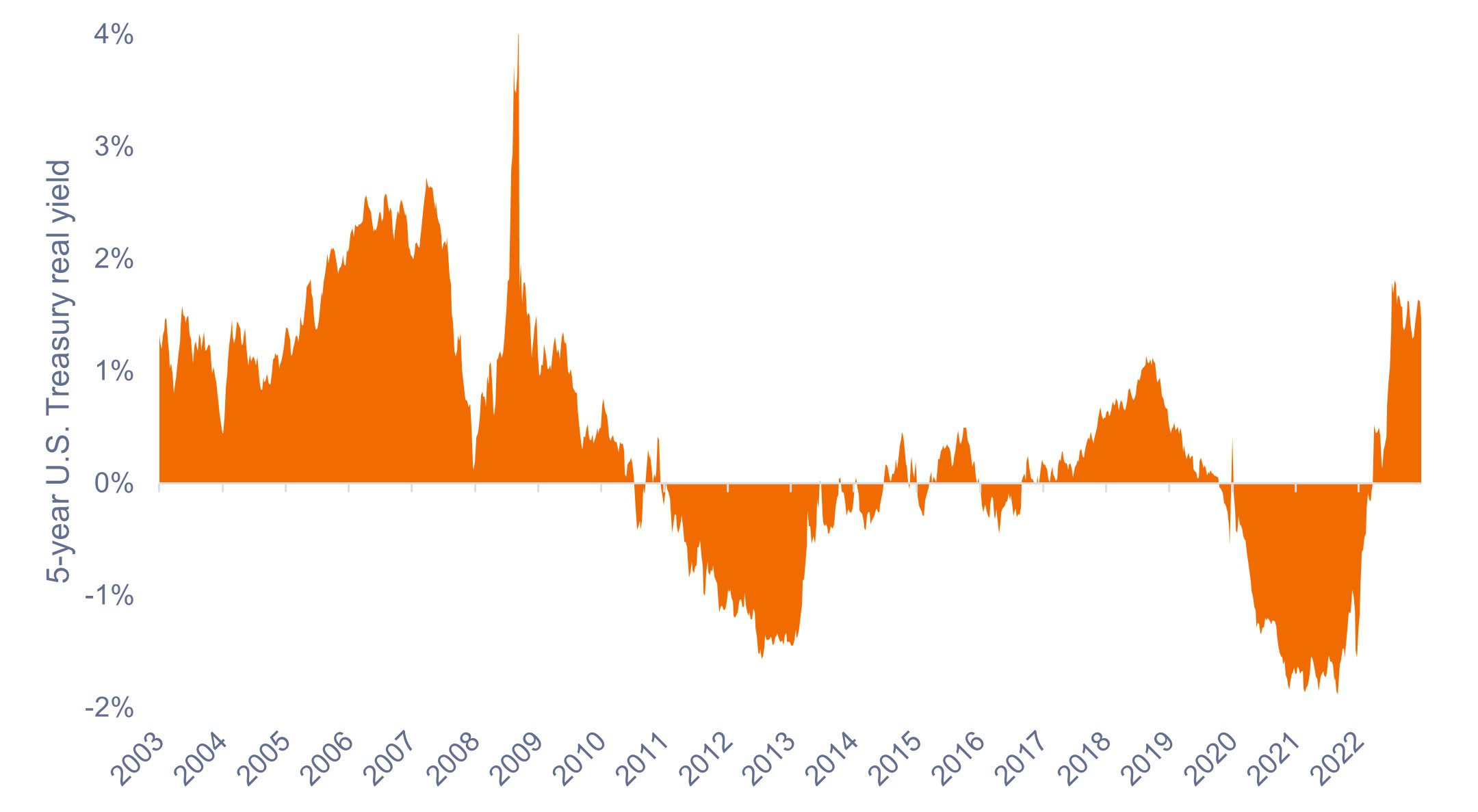
Source: Bloomberg, as of March 16, 2023. Past performance is no guarantee of future results.
3. Credit spreads
The yield on a fixed income security comprises two main elements: The yield on the risk-free government bond of similar maturity, and an additional yield, or credit spread, which is paid to investors to compensate them for the higher risk of the security.
While investors should pay attention to yields on government bonds, it is equally important to evaluate sector spread valuations in relation to their historical levels, as well as in relation to other sectors. In doing so, we can determine which sectors and individual securities look cheap relative to others, or cheap relative to their historical valuations.
As shown in Figure 4, spreads in securitized sectors are currently wider than spreads in corporate investment grade (IG) and high yield (HY). In our view, securitized sectors are presently offering better value relative to corporates, which we think could warrant maintaining an allocation to securitized assets.
Figure 4: Current spread percentile of historical spread range, excl. COVID (2010-2023)
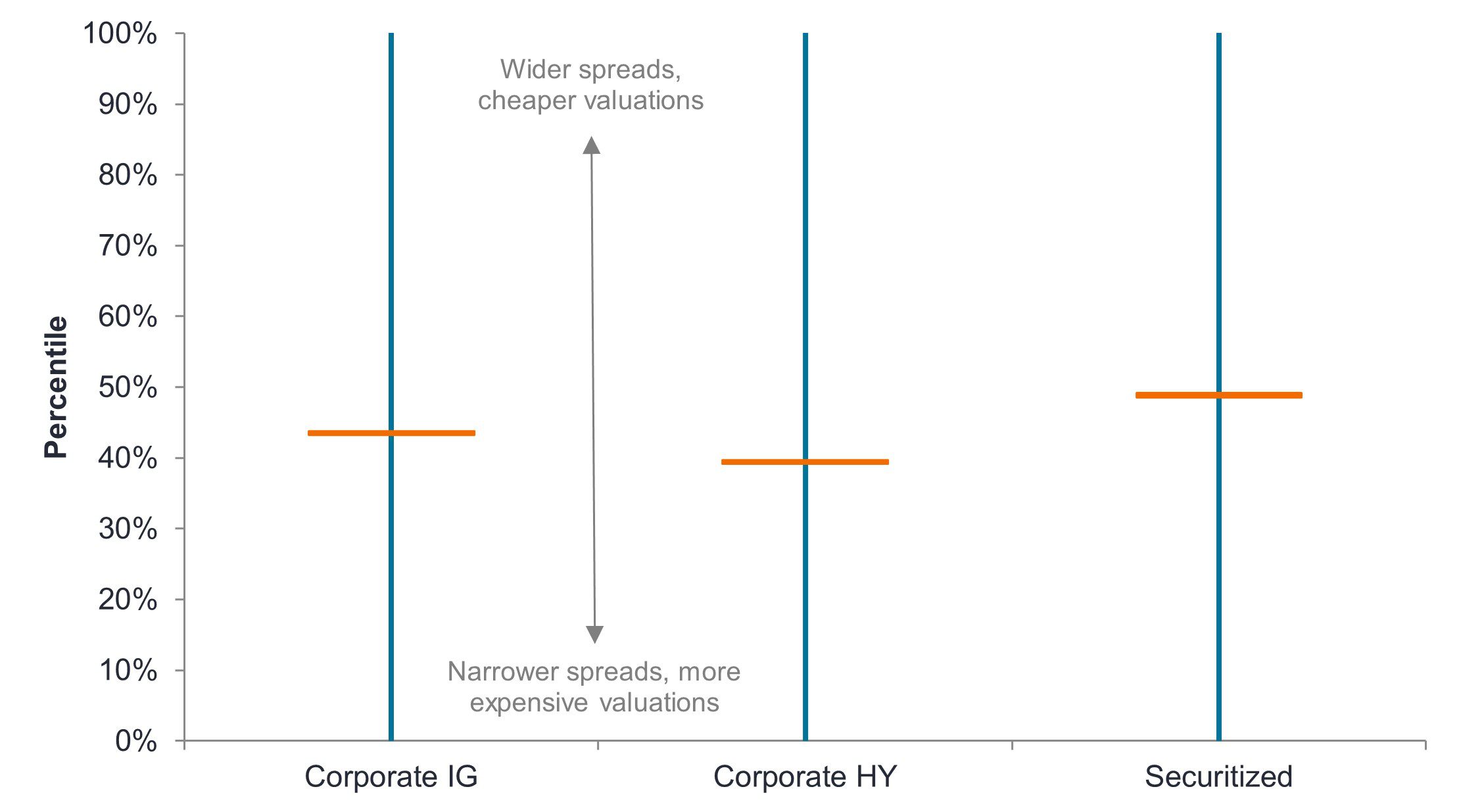
Source: Bloomberg, Janus Henderson Investors, as of March 16, 2023. Indices used to represent asset classes: Corporate IG (Bloomberg U.S. Corporate Index), Corporate HY (Bloomberg U.S. Corporate High Yield Index), Securitized (Bloomberg U.S. Securitized: MBS/ABS/CMBS and Covered TR Index).
4. Bonds versus cash
Investors seeking interest income have an alternative to bonds in the form of bank savings accounts. We therefore need to evaluate bond yields relative to yields on bank savings.
Prior to the first quarter of 2022, there was little incentive for investors to consider risk assets as an alternative to cash. But the picture has changed dramatically in recent months as LIBOR and Treasury rates have risen sharply while rates on savings have hardly moved, as shown in Figure 5. An investor can now get over 4% of additional yield from a 1-month U.S. Treasury, or from LIBOR-based instruments such as AAA collateralized loan obligations (CLOs), making the case that bonds currently look significantly better than cash.
Additionally, while yields on short-duration fixed income have risen significantly, investors may only lock those yields in for the short term. If the Fed is forced to cut rates meaningfully, short-term bonds could underperform relative to long-term bonds. In our view, therefore, investors might consider pairing a short-term fixed income allocation with, for example, longer-dated U.S. Treasuries or agency mortgage-backed securities (MBS), which may help to defend a portfolio’s yield against the possibility of falling rates.
Figure 5: Banks are not passing higher interest rates on to depositors (Apr 2021 – Feb 2023)
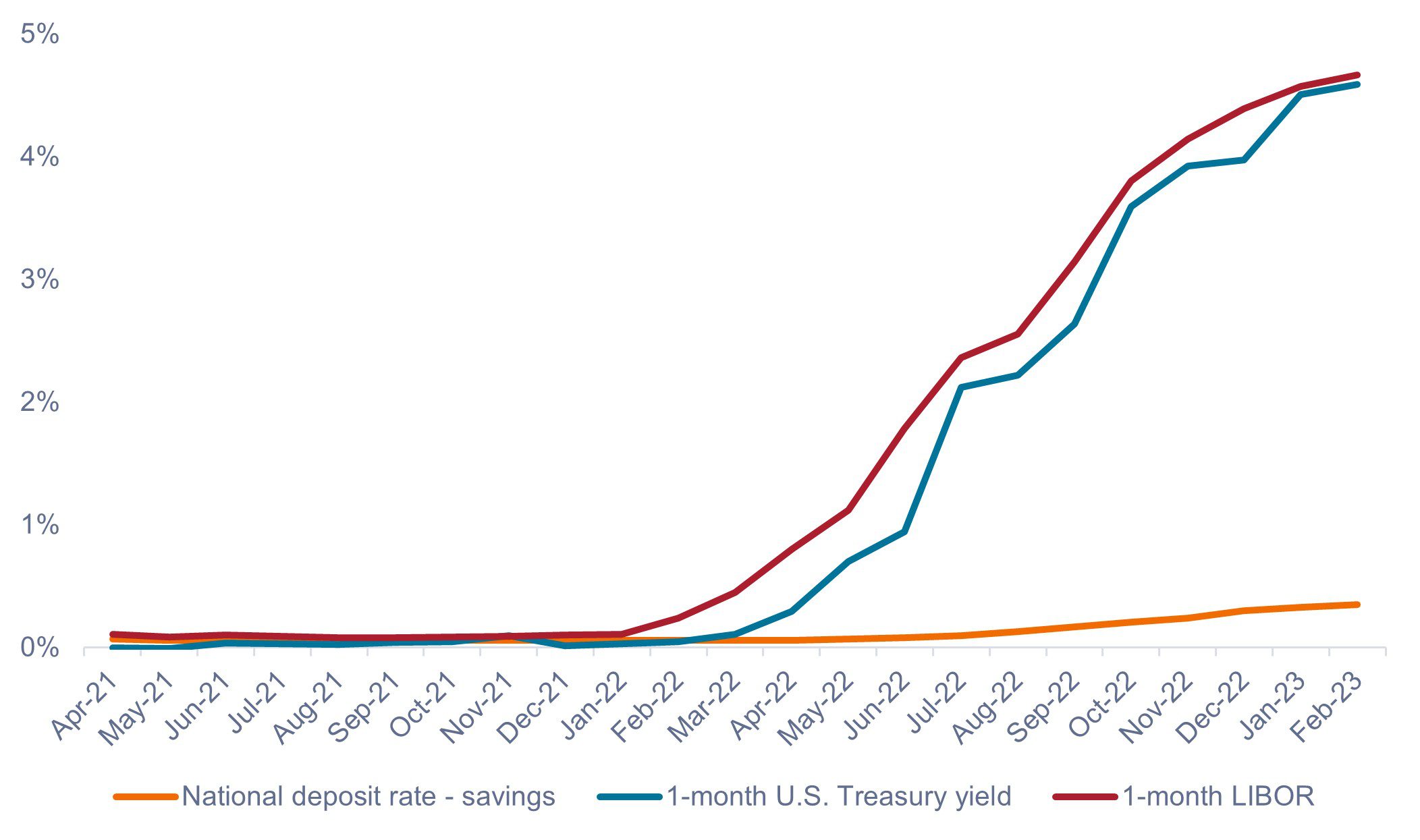
Source: Bloomberg, FDIC, as of February 28, 2023.
5. Bonds versus stocks
The final valuation metric to consider is how bond valuations compare to equities – the asset class they’re most often paired with. In this case, we can evaluate the earnings yield on the S&P 500® Index versus the yield on a 6-month U.S. Treasury. Since 2008, the earnings yield on equities has far exceeded the yield on the 6-month Treasury, as shown in Figure 6. But here, too, the picture has changed significantly following the rate hikes in 2022 and 2023. These two yield measures are now close to parity – a situation we have not witnessed since 2001.
Investors who are concerned about a slowing economy or recession can now get a similar yield from bonds as they can from equities. Consequently, we think bonds are cheaper relative to equities than they have been in over 20 years.
Figure 6: U.S. Treasury yield versus S&P 500 earnings yield (2001 – 2023)
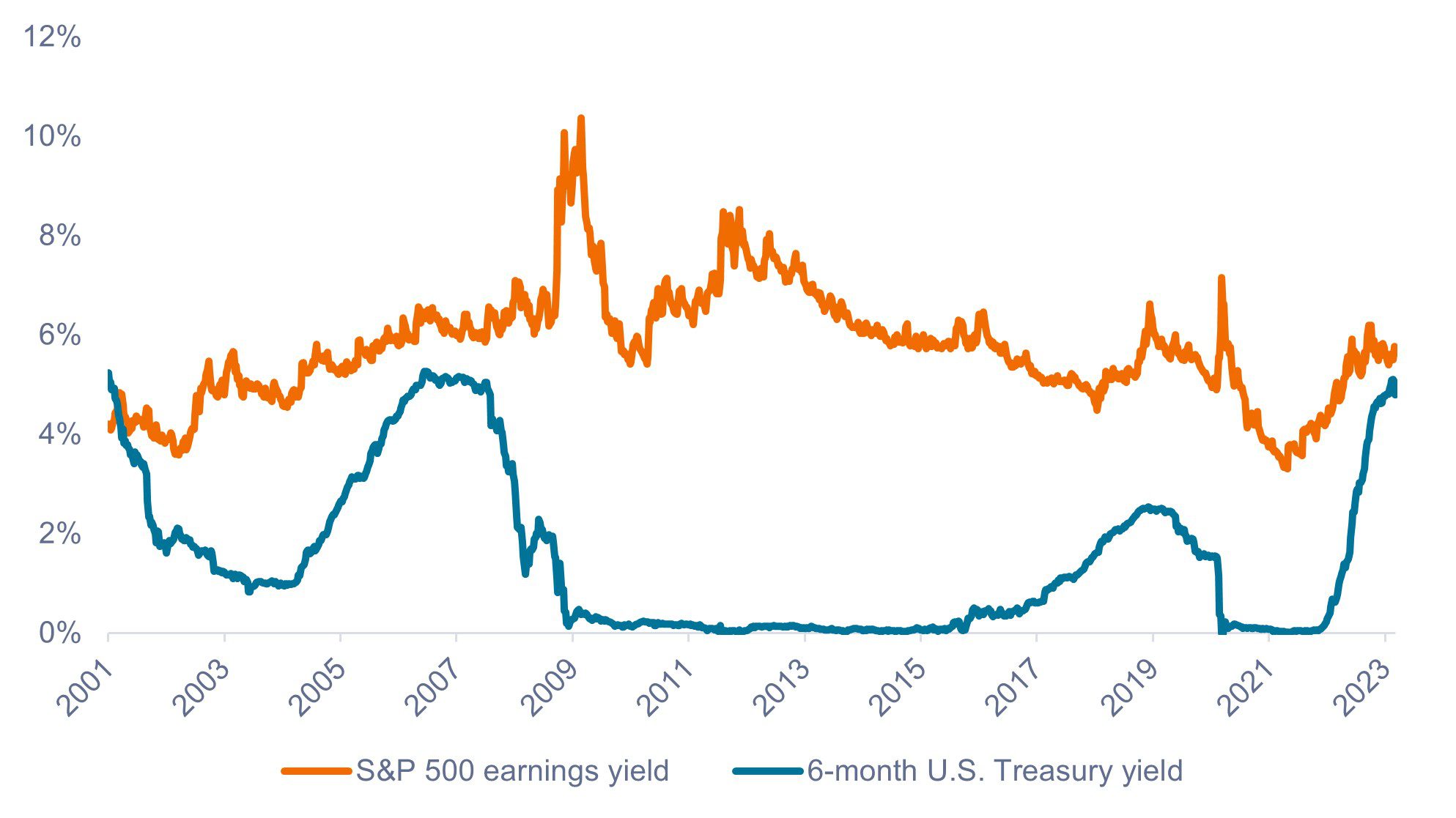
Source: Bloomberg, as of March 16, 2023.
In summary
Just as investors use valuation tools for their equity allocations, we think it is important to apply the same approach to fixed income. Doing so can help investors weigh the risk-reward of being overweight bonds as an asset class, and determine which sectors, durations, and individual securities they want exposure to.
Considering the five key metrics we just covered, in our view, fixed income looks cheaper now than it has in decades due to higher nominal and real yields and relative value to cash and equity.
Learn more
For our latest thinking and in-depth analysis on the themes shaping today’s investment landscape please visit our website.
